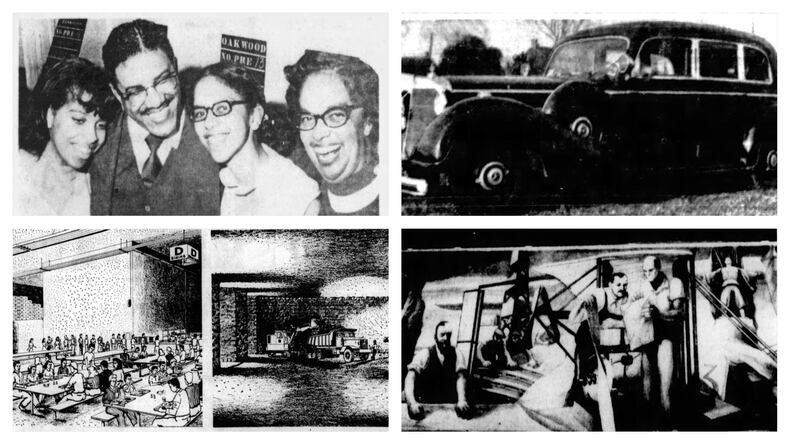Here’s a look at some stories from the week of July 7-13.
July 8, 1940: Murals of Wright Brothers in Russian costume ordered destroyed
A New York WPA administrator ordered three of four murals hung at Floyd Bennett Field in New York burned, declaring they were “obviously communist murals.”
The Works Progress Administration was an agency that employed millions of jobseekers to carry out public works projects, including the construction of public buildings and roads from 1935-43.
The murals, which required more than three years to complete, were part of a federal art project.
One mural showed the Wright Brothers at Kitty Hawk in Russian peasant costumes.
Two other murals included a statue of Joseph Stalin with a fallen aviator at his feet, a red star on a Naval hanger and a painting of the Soviet plane which flew from Moscow to California several years prior.
A fourth mural, depicting the history of flying, was ruled free of propaganda taint.
One artist was discharged from the WPA for refusing to sign an affidavit that he was not a member of the communist party. An investigation was underway to determine the identity of others who might have been involved.
July 9, 1950: Hitler’s car shown in Dayton 4 days
Adolf Hitler’s personal automobile, a 1943 Mercedes limousine that completely armor-plated with one-inch bulletproof glass, was on a cross-country tour that stopped in Dayton.
The car was billed as a “symbol of the futility of tyranny.”
The showroom at Stenger’s Ford dealership was the site of the display, which was open to the public.
The car’s armor-plate was made of 2000 pounds of half-inch steel. The motor was supercharged for a top speed of 102 miles per hour. The gas tank held 70 gallons, but the car only got 3 miles per gallon.
The car was captured by Allied forces May 7, 1945, at Hitler’s hideout at Berchtesgaden, Germany.
July 10, 1960: Builder proposes shelter 700 feet underneath city
A home builder requested a hearing before Dayton’s city commission to discuss a construction plan for a 700-foot-deep bomb shelter.
Orville Beetley said the shelter could be located underneath Dayton.
The developer said the shelter could be constructed for any number of people, from a few thousand to more than a half million.
Beetley estimated the cost at $375 million, or $750 per person.
Beetley maintained it would be possible to build the shelter in a 300-foot-thick section of the earth’s crust called the Richmond Shales.
He envisioned underground storage for medicines, clothes and food. Water would be stored in underground reservoirs. Generators would pump air.
To reach the shelter, spiral ramps, similar to a corkscrew, would be constructed at each school site.
How much protection would the shelter provide? Civil defense officials said a 10-megaton bomb would dig a hole 200 feet deep and 5,000 yards wide. That would be 300 feet above Beetley’s shelter.
July 12, 1970: Jim McGee our Mayor
When Dave Hall resigned as mayor of Dayton in 1970, the seat was left vacant for nearly two months.
City commissioners Mike Liskany and James McGee were both in the running to replace Hall.
After nearly two months, Liskany dropped out of the race, paving the way for McGee to become Dayton’s first Black mayor.
Liskany cited “the interest of unity and of moving ahead toward solving the problems of this city,” as his reasons for breaking the deadlock.
The city commission aimed to have McGee sworn in the following week.
McGee accepted the news that he was to become mayor with mixed emotions.
“When you work as closely as we on the commission do,” he said, “it hurts you when you know one of the others has made a sacrifice.”
McGee remained reluctant to accept congratulations until the decision was made official.
July 13, 1980: Large crowds gather at Courthouse Square for daily lunch
Despite 90-degree temperatures, hundreds of people were milling around Courthouse Square in downtown Dayton.
Those who didn’t pack their own lunch were visiting an eggroll vendor or the old-fashioned cart where 60-cent hamburgers were sold.
Six years after its construction, the spacious Courthouse Square had become an integral part of the downtown Dayton scene.
A variety of events took place on the Square at noontime, from displays to races to concerts to protests.
And after work, “Affairs on the Square,” were held every three weeks from May to October to keep people downtown into the evenings. They featured beer, wine and music.
Plans for the following summer called for expanding evening and weekend activities at the Square.
About the Author






